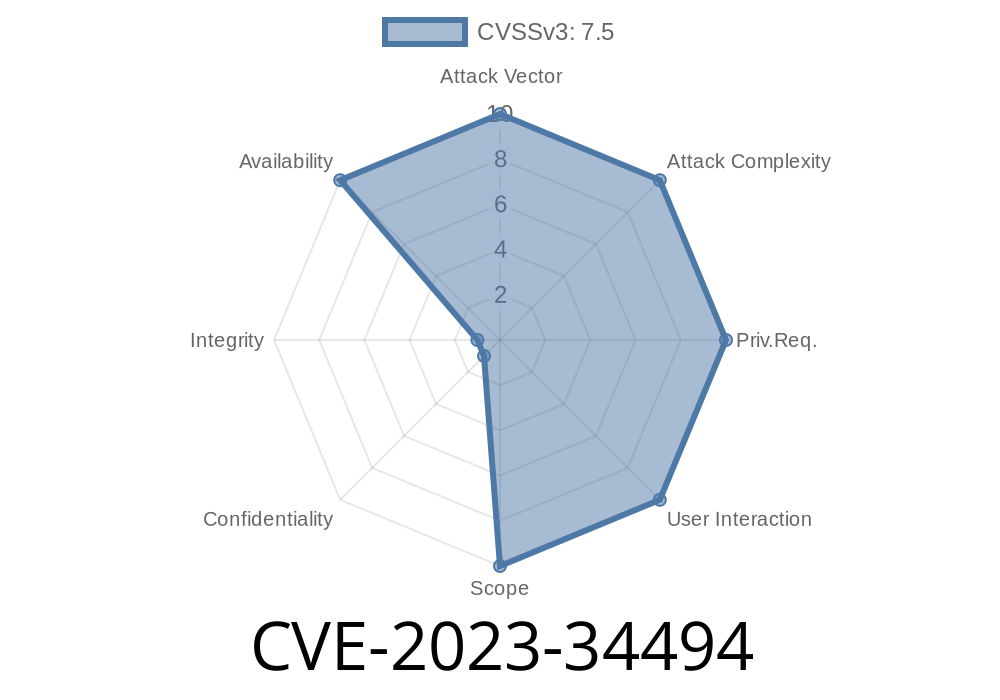In this post, we will be analyzing a critical Heap-Use-After-Free vulnerability in NanoMQ .16.5, which has been designated the identifier CVE-2023-34494. We will begin by introducing the affected component of the software, followed by a step-by-step walkthrough of the vulnerable code snippet, as well as an in-depth description of the exploit methodology. Finally, we will provide references to the original sources of information for further reading.
Background
NanoMQ (https://nanomq.io) is a lightweight, high-performance MQTT broker designed for IoT applications. It is built upon nanolib, a collection of C-based libraries optimized for embedded systems, and has been widely adopted by various users in the community.
The issue at hand affects the nano_ctx_send function in the nmq_mqtt.c file (https://github.com/nanomsg/nanomq/blob/master/src/apps/nmq_mqtt.c), which is responsible for handling MQTT messages being sent between the broker and connected clients. The use-after-free vulnerability could potentially allow an attacker to execute arbitrary code in the context of the affected process.
Vulnerable Code Snippet
static void
nano_ctx_send(void *arg)
{
nano_mqtt_send_ctx *send_ctx = (nano_mqtt_send_ctx *)arg;
send_ctx->ctx->client_id.assert_refcnt++;
...
nni_msg_free(msg);
nni_mtx_unlock(&(send_ctx->ctx->client_id.heartbeat_mtx));
// Vulnerable use-after-free here
char client_id_str[NNG_MAXADDRLEN];
strncpy(client_id_str, send_ctx->ctx->client_id.id_data,
send_ctx->ctx->client_id.id_size);
client_id_str[send_ctx->ctx->client_id.id_size] = '\';
debug_msg(
"SEND: [%s] nano_ctx_send [DONE] mid: %u ", client_id_str, send_ctx->mid);
...
}
Analysis
The vulnerability lies in the use of the send_ctx object after nni_msg_free(msg) and nni_mtx_unlock() have been called, which potentially results in the memory for send_ctx being deallocated and then reused by another part of the program or the operating system.
In the vulnerable snippet, the send_ctx->ctx->client_id object is copied into a local character buffer (client_id_str), even though the memory used by send_ctx might have already been deallocated by nni_msg_free(msg).
As a result, using client_id_str in subsequent function calls or references might result in undefined behavior, allowing an attacker to exploit the use-after-free vulnerability to execute arbitrary code or cause a denial of service (crash).
Exploit
To exploit this vulnerability, an attacker would need to first connect to the NanoMQ broker as a client and send specifically crafted MQTT messages that cause the heap-use-after-free to occur. This could involve sending messages with duplicate or specially crafted client IDs, message IDs, or payload content, designed to trigger the vulnerability in the nano_ctx_send() function. By doing so, an attacker could potentially hijack critical structures in memory, execute arbitrary code, or cause the NanoMQ service to crash.
To successfully exploit the vulnerability, an attacker might need to have a deep understanding of the system call conventions and memory layout of the affected platform, as well as the memory allocation behavior of the NanoMQ software.
Mitigation and Recommendations
Users are advised to update their NanoMQ installations as soon as a patch becomes available, as well as keep abreast of security advisories related to the software.
Furthermore, users should restrict access to the MQTT broker via appropriate network filtering, authentication, and authorization, to minimize the attack surface and reduce the likelihood of exploitation.
In the interim, developers of the software should address the vulnerability in the codebase by ensuring that send_ctx objects are not used after memory freeing operations, such as nni_msg_free(msg) and nni_mtx_unlock(), have been executed.
Original References
1. NanoMQ - https://nanomq.io
2. NanoMQ GitHub Repository - https://github.com/nanomsg/nanomq
3. nmq_mqtt.c file - https://github.com/nanomsg/nanomq/blob/master/src/apps/nmq_mqtt.c
Conclusion
We have provided a detailed analysis of the CVE-2023-34494 vulnerability, as well as recommendations for mitigation and future prevention. Understanding and addressing such vulnerabilities is critical for ensuring the security and stability of IoT systems and other applications that rely on MQTT brokers and the NanoMQ software.
Timeline
Published on: 06/12/2023 14:15:00 UTC
Last modified on: 06/16/2023 16:33:00 UTC
